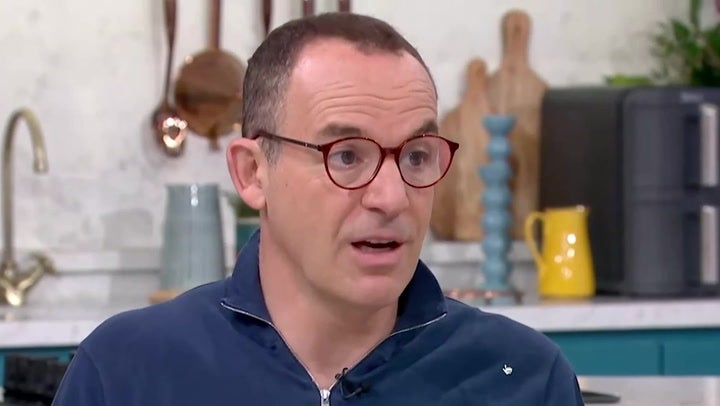The start of 2025 has brought positive news for home buyers as property value growth steadies and lenders begin offering better mortgage rates.
This year’s sales market is off to a stronger start than in 2024 and 2023, according to the latest data from Zoopla, with buyer demand up 13 per cent.
In February, some mortgage rates fell below four per cent for the first time since November following the Bank of England’s decision to cut the interest rate another quarter point to 4.5 per cent. This has brought the figure to the lowest in 18 months,
Many brokers are now offering mortgages with interest at around 4.2 per cent, while Barclays and Santander have both launched two- and five-year fixed rate mortgages at 3.99 per cent.
This positive industry picture means it could be a good time for first-time buyers to begin making the first steps towards ownership.
There’s lots to consider on this journey, however. Saving up for a deposit (the hard part) takes many years for most people, so buyers will want to be sure their getting the most out of their down payment.
A crucial way to do this is to consider the loan-to-value (LTV) ratio of their deposit. This could be the difference between a higher and lower interest rate on a mortgage, so should be taken into consideration.
Simply put, a buyer’s LTV is decided by the amount they puts down for a deposit, versus the total value of the property. For instance, putting down £10,000 on a £100,000 property gives a 90 per cent LTV.
This may seem quite straightforward, but money expert Martin Lewis says how lenders take LTV into account is important, and can also be fairly complicated.
Get a free fractional share worth up to £100.
Capital at risk.
Terms and conditions apply.
Get a free fractional share worth up to £100.
Capital at risk.
Terms and conditions apply.
LTV will have a major impact on the mortgage rate a buyer can get, he explains. Generally, the lower the LTV – the smaller the loan compared to house price – the lower the interest rate there will be on the mortgage. This generally holds true until about 60 per cent LTV, below which point the rates tend to change less.
However, this isn’t a straightforward correlation when it comes to actually getting a mortgage deal. Rather, there are some “crucial thresholds” where a lower LTV can unlock a better interest rate.
These are at 90-95 per cent, 80-90 per cent, 75-80 per cent and 60-75 per cent. If you’re deposit is just on the edge of a lower threshold, it can be a good idea to try and add the extra amount needed and improve your LTV.
The Money Saving Expert founder gives an example of someone buying a house for £150,000, with a £14,000 deposit saved.

“£14,000 is just over nine per cent. Because it isn’t ten per cent, that means you don’t have a 90 per cent LTV – you have a 95 per cent LTV,” he explains.
“You’re way past 95, but you still only have a 95 per cent LTV, which means you’ll be getting a mortgage rate for people in the 95 per cent LTV category.”
In this scenario, it might be a good idea for a buyer try and find the extra £1,000 to bring their deposit to £15,000 and themselves into the 90 per cent LTV category. This could make the difference between a 5 per cent mortgage rate or 4.5 per cent mortgage rate, which could mean thousands of pounds saved in the long run.
On a £150,000 property, the difference would be £500 to £600 a year. Over the course of a 25 year mortgage, assuming all stays the same, this would be a £12,500 to £15,000 additional cost – making the extra £1,000 at the buying stage more than worth it.
Generally, it is always better for a buyer to put down as much as they can on their deposit. This will ensure they get the best possible rates and have the least possible amount to pay off over time.
Giving his rule of thumb, Mr Lewis says buyers should always aim for at least a 10 per cent deposit. While five per cent deals are available, the range of deals at decent rates increases substantially at 10.
But it’s 20 to 25 per cent that gets buyers a “decent rate,” he advises, and 40 per cent that gets the “top rates.”
And there’s more. The money guru adds that he has heard “anecdotally” from several mortgage brokers of a little-known trick for buyer’s to improve their chances of being accepted for a mortgage.

This is to push just £100 beyond the amount that puts them on an LTV threshold, giving the lender more confidence that the deal is within their financial means.
And it’s important not just to consider LTV when buying a house, but also some time after the property is purchased. When a buyer applies for a mortgage, they need to give an estimate of the property’s current value, which will be checked later by an independent valuer.
However, if they haven’t remortgaged in a while and house prices have increased since their purchase, it could put them into a lower LTV band – meaning a better mortgage deal. It’s not a good idea to raise this if property prices have dropped, though, as this could land them in a worse LTV band.
When investing, your capital is at risk and you may get back less than invested. Past performance doesn’t guarantee future results.

